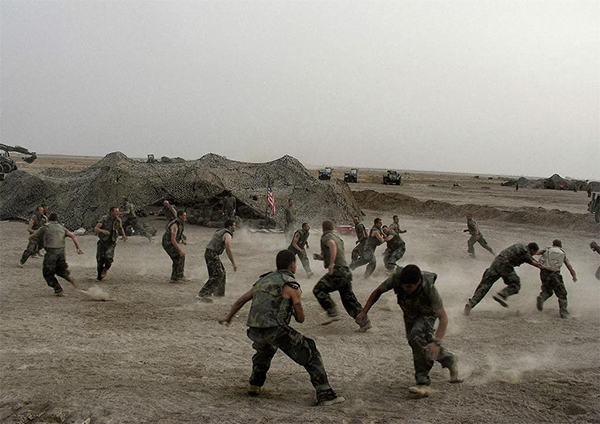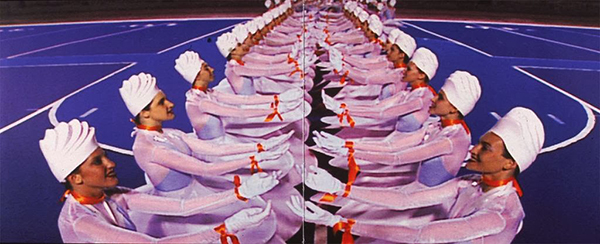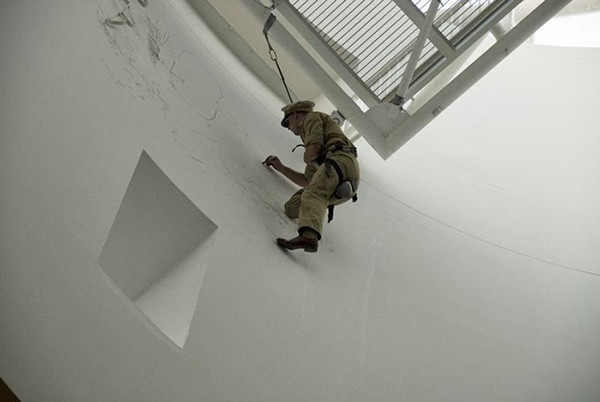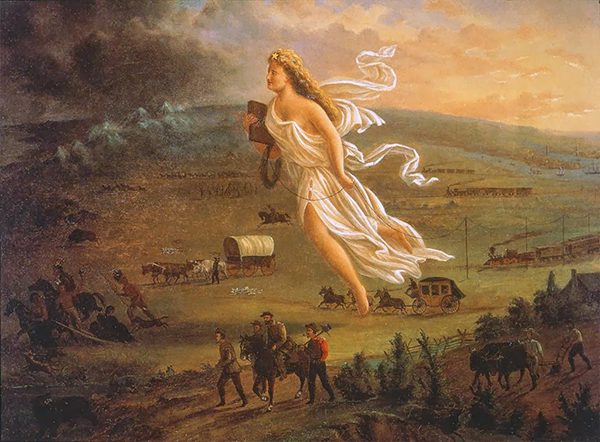“America’s identity lies in its open spaces, the space of possibility, but also of speed, movement, and unobstructed will.” – Rebecca Solnit, “The Desert: Scapeland,” As Eve Said to the Serpent: On Landscape, Gender, and Art, page 87
I grew up mostly ignorant of football. My Dad would listen to it on the radio occasionally, especially when his alma mater, Michigan State, had a game against a Big Ten rival. But the sport didn’t color the autumns of my childhood in the same way Gary Williams’s Maryland Terrapins basketball team did winter nights, when we lost the light early and I listened to the rapid-fire radio commentary drying dinner dishes at my Dad’s side, or the way the Orioles and their mild-mannered but stalwart shortstop Cal Ripken Jr. did humid summer evenings, when I sought the cool refuge of an air-conditioning wall unit and relaxed to the comfortable drawl of television baseball coverage.
And so, when my younger sister went south to college in Georgia and returned a loyal and knowledgeable Bulldogs fan, I was confronted with a game that baffled and bored my uninitiated eyes. Nothing about it was intuitive to me. Why would anyone watch this sport, I wondered? How could so many love it? She patiently explained the rules, and I began to follow the major points. Later, when I married a man from Nebraska, where the university stadium in Lincoln becomes the state’s third most populous “city” on game days, I gradually picked up more.
As I’ve become versed in American football, what’s struck me is the game’s language of ownership and territory, its possessions, interceptions, field positions, and yards gained or lost. These are not the constant backs and forths of control and location we follow in basketball, hockey, or soccer. Instead, football’s narrative is one of often slow but sometimes spectacular progress across a hundred-yard field, from a team’s own half, past the fifty-yard line, into a rival’s territory, and ultimately, one hopes, across its goal line for a touchdown. With the exception of a few circumstances when the ball is kicked (field goals, punts, kickoffs), body and ball must gain territory together, with four chances for an offensive team to conquer turf by a minimum of ten yards. Or else the driving team relinquishes possession and tries to hold its competitors against their own forward march across the expansive field.
Football came into its own in the late nineteenth and early twentieth centuries as it moved away from its rugby origins to become the distinctly American game we know today. The transfiguration occurred between 1880 and 1906 through a series of rule changes that ushered in the quarterback position, the first down, the ten-yard advance that guarantees continued possession, and the forward pass. The game was amended ostensibly to make the sport more exciting, but the rule changes also reflect an American ideology, Manifest Destiny, carried out upon the Western landscape.
In her 2001 essay “The Desert: Scapeland,” Rebecca Solnit writes of aggression and the American West, “What begins as frontier violence — physically invading and then shooting one’s way forward — is reprised as military training and then as leisure: shooting and speeding over the land are still central forms of recreation out here.” (As Eve Said to the Serpent: On Landscape, Gender, and Art, page 88) Like driving fast cars and shooting deadly guns, football, I speculate, reimagines the violent confrontation over Western land from earlier in the nineteenth century, binding it with rules and making rivals more or less equal. The game was born and refined at East Coast colleges, but it is Western history made Eastern recreation and then brought West again, becoming popular across the country but nowhere else in the world.
Manifest Destiny, indeed, has done much to shape American history and delineate the contours of our country. From its origins in seventeenth-century colonial exceptionalism to the fervor with which Manifest Destiny’s name was invoked in the 1840’s, when it became the popular rationale to go to war against and usurp territory from Mexico, the ideology defined America’s frontier identity. And even if it wasn’t always articulated, it was also present throughout the seventeenth, eighteenth, and nineteenth centuries, underlying Americans’ press ever westward into lands where indigenous peoples lived.
John Gast’s widely reproduced American Progress, from 1872, recounts this powerful American impulse, though the story is sanitized, mostly purged of the violence Manifest Destiny inspired. In the painting, the oversized, blond, classically robed figure Columbia floats gracefully, shepherding west agriculture (the plow), technology (the trains and telegraph line), property (the fence), and the principles of Enlightenment (sunny skies and the school book cradled in the crook of her arm). She and the Western civilization she brings supplant stormy skies, wild animals, and a few indigenous figures with bows and arrows, who flee in anticipation. In Gast’s rendition, these Native Americans are defenseless, overwhelmed. They are not the worthy adversaries we now find in football poised to face off against rivals at the line of scrimmage. The legacy of the role of indigenous peoples in territorial conflict, though, is carried on in National Football League team names like the Washington Redskins and the Kansas City Chiefs and also the Dallas Cowboys and the San Francisco 49ers, who flooded central California in search of gold in 1849, displacing the area’s native populations.
If football was a way to come to terms with the legacy of Manifest Destiny, to channel and repurpose the impulses that fueled this nationalistic ideology, the trajectory could also work in the opposite direction. General Douglas MacArthur, ESPN reporter Sal Paolantonio tells us in a 2008 book, How Football Explains America, made use of football competition to exercise militarism. At West Point, where he came on assignment from President Wilson after having served as the most decorated soldier in World War I, he made sports and the celebration of athletic achievement, especially in football, a centerpiece of the Army’s culture. During his tenure there, he penned this quatrain and ordered it installed outside the West Point Gymnasium:
Upon the fields of friendly strife
Are sown the seeds
That, upon other fields, on other days
Will bear the fruits of victory.
The seeds MacArthur himself sowed continue to blossom still. In the wake of the 9/11 attacks, the 2001 Army-Navy game was the most watched college football game of that decade, despite the fact that both teams came into the event with losing records. Navy, in fact, did not win a single game that year. Viewers, it seems, weren’t necessarily tuning in for great athletic competition though. Indeed, a recent NPR story tells how the players themselves, just like the huge television audience watching them, understood the football field that day as a precursor, a testing ground for the international battlefield, where athletes would soon need to prove themselves as soldiers. Stirred by the fear and confusion of the recent terrorist attacks on the U.S., players and spectators alike also recognized the military rivalry as an opportunity to cheer for America through its most representative game.

Iraq War, “American soldiers playing football,” photograph by Alex Majoli for Magnum Photos, 2003. Image courtesy of Artstor.
As I came to know something of football — its rules, the backdrop against which it emerged and then flourished — I ran into an old acquaintance, the American artist Matthew Barney. Barney grew up mostly in Idaho and played quarterback on his high school football team there. After undergraduate studies in art at Yale University, he quickly rose to art-world fame. For his largest and best-known project, the Cremaster Cycle (1994-2002), the artist translated his football play-making skills into coordinating the details of his sprawling and elaborate film epic. Barney brings great physical intelligence to his projects. For Cremaster 1, he locates the action on the blue turf of the Boise State football field. Smiling dancers in uniforms and hard white hats replace football players facing off just before a snap. The precise symmetry of their choreography suggests a taut equilibrium of opposing forces, much like we find in football.

Production still from Matthew Barney’s Cremaster 1, dancers with outstretched arms, 1995. Image courtesy of Artstor.
Michael Kimmelman, former art critic for the New York Times, has written of the artist, “Barney, the boy from Boise, left the West for New York and a life as an artist. He once described Boise to me a ‘a valley full of pressure, the pressure of that wall of mountains combined with the great distances between places: it was something to overcome.’” I won’t begin to try to unpack the intricacies of Barney’s ornately stylized, abstruse work or its relationship to his own biography here. But what I sense in so much of it, as Kimmelman’s passage suggests, are abiding interests in landscape (from the blue turf of a football field to the flooded Bonneville Salt Flats of Utah and the Columbia Ice Fields of Alberta, Canada, where parts of Cremaster 2 were shot), risk, and control. Perhaps it shouldn’t come as too much of a surprise, then, that the figure of General Douglas MacArthur appears as the protagonist in Barney’s Drawing Restraint 14, from 2006. Adopting the character and dress of MacArthur, Barney summits San Francisco MoMA’s five-story atrium, enacting a kind of territorial occupation of the site of his own exhibition that calls to mind MacArthur’s military campaigns in the Philippines, Japan, and beyond. Perhaps we can read Barney’s performance as an anti-monument to a burdensome imperial history to which he is nonetheless indebted.

Matthew Barney, Drawing Restraint 14, 2006 performance at the San Francisco Museum of Modern Art. Image courtesy of SFMoMA.
Football may not have occupied a prominent place in my own childhood, but it’s become part of my autumns here in Seattle. I’ve fallen for the exhilaration of a pass skillfully captured half way down a field. I’ve been fascinated to watch full-bodied men throw their bulk about with such abandon. And I’ve been caught up in the thrill of cheering on a big-hearted quarterback and a hot-headed, fast-talking defender as they lead a hometown team to the brink of championship. But I’m a conflicted enthusiast. The accusations of sexual assault that have dogged some of the game’s celebrated players, the bigoted bullying, and the brain damage that the sport exacts on its worthiest competitors should be enough to perturb even the game’s staunchest supporters.
If, as I suggest, the sport’s genesis is history made recreation, I hope its future can be one of reconciliation and not of thoughtless recapitulation. Football, like other sports, is a conductor of larger cultural issues. I hope it can reflect the best of us, not the worst. I’m rooting, probably against the odds, for that kind of game.
